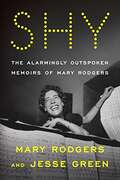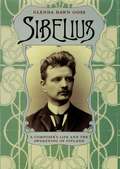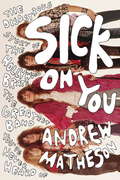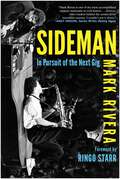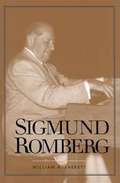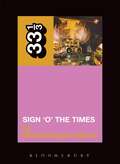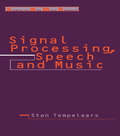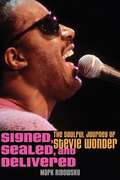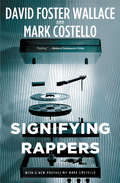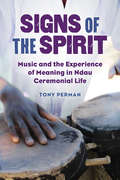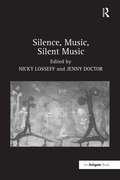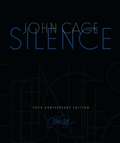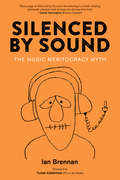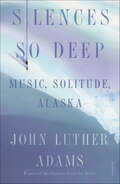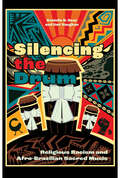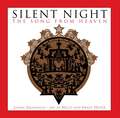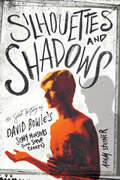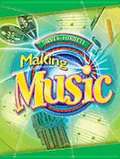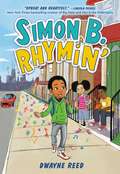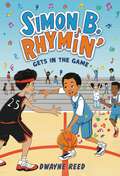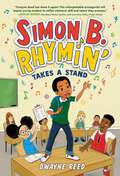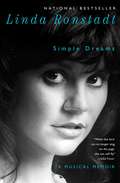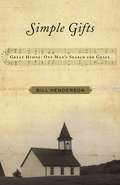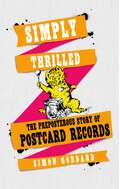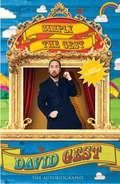- Table View
- List View
Shy: The Alarmingly Outspoken Memoirs of Mary Rodgers
by Mary Rodgers Jesse GreenThe memoirs of Mary Rodgers--writer, composer, Broadway royalty, and "a woman who tried everything." "What am I, bologna?" Mary Rodgers (1931-2014) often said. She was referring to being stuck in the middle of a talent sandwich: the daughter of one composer and the mother of another. And not just any composers. Her father was Richard Rodgers, perhaps the greatest American melodist; her son, Adam Guettel, a worthy successor. What that leaves out is Mary herself, also a composer, whose musical Once Upon a Mattress remains one of the rare revivable Broadway hits written by a woman. Shy is the story of how it all happened: how Mary grew from an angry child, constrained by privilege and a parent's overwhelming gift, to become not just a theater figure in her own right but also a renowned author of books for young readers (including the classic Freaky Friday) and, in a final grand turn, a doyenne of philanthropy and the chairman of the Juilliard School.But in telling these stories--with copious annotations, contradictions, and interruptions from Jesse Green, the chief theater critic of The New York Times--Shy also tells another, about a woman liberating herself from disapproving parents and pervasive sexism to find art and romance on her own terms. Whether writing for Judy Holliday or Rin Tin Tin, dating Hal Prince or falling for Stephen Sondheim over a game of chess at thirteen, Rodgers grabbed every chance possible--and then some. Both an eyewitness report from the golden age of American musical theater and a tale of a woman striving for a meaningful life, Shy is, above all, a chance to sit at the feet of the kind of woman they don't make anymore--and never did. They make themselves.
Sibelius: A Composer's Life and the Awakening of Finland
by Glenda Dawn GossOne of the twentieth century's greatest composers, Jean Sibelius (1865-1957) virtually stopped writing music during the last thirty years of his life. Recasting his mysterious musical silence and his undeniably influential life against the backdrop of Finland's national awakening, Sibelius will be the definitive biography of this creative legend for many years to come. Glenda Dawn Goss begins her sweeping narrative in the Finland of Sibelius's youth, which remained under Russian control for the first five decades of his life. Focusing on previously unexamined events, Goss explores the composer's formative experiences as a Russian subject and a member of the Swedish-speaking Finnish minority. She goes on to trace Sibelius's relationships with his creative contemporaries, with whom he worked to usher in a golden age of music and art that would endow Finns with a sense of pride in their heritage and encourage their hopes for the possibilities of nationhood. Skillfully evoking this artistic climate--in which Sibelius emerged as a leader--Goss creates a dazzling portrait of the painting, sculpture, literature, and music it inspired. To solve the deepest riddles of Sibelius's life, work, and enigmatic silence, Goss contends, we must understand the awakening in which he played so great a role. Situating this national creative tide in the context of Nordic and European cultural currents, Sibelius dramatically deepens our knowledge of a misunderstood musical giant and an important chapter in the intellectual history of Europe.
Sick On You: The Disastrous Story of The Hollywood Brats, the Greatest Band You've Never Heard Of
by Andrew MathesonMOJO magazine's 2015 Book of the Year, the outrageous true story of the Hollywood Brats--the greatest punk band you've never heard of--brilliantly told by founding member Andrew Matheson With only a guitar, a tatty copy of the Melody Maker, and his template for the perfect band, Andrew Matheson set out, in 1971, to make music history. His band, the Hollywood Brats, were pre-punk prophets--uncompromising, ultrathin, wild, and untamable. Thrown into the crazy world of the 1970s London music scene, the Brats recorded one genius-but-ignored album and ultimately fell foul of the crooks who ran a music industry that just wasn't quite ready for the punk revolution. Directly inspiring Malcolm McLaren, the Sex Pistols, and the Clash, the Hollywood Brats imploded too soon to share in the glory. Sick On You is a startling, funny, and incredibly entertaining period memoir about never quite achieving success despite flying so close to greatness.
Sideman: In Pursuit of the Next Gig
by Mark Rivera"Narrative & Biography" winnner in the 2023 Porchlight Business Book Awards While most successful sidemen are lucky to spend a decade in the music business, multi-instrumentalist Mark Rivera is working on his fifth. Best known as Billy Joel&’s saxophonist as well as Musical Director for Ringo Starr and his All Starr Band, Rivera has shared the stage with some of Rock &‘n&’ Roll&’s greatest performers, including John Lennon, Paul McCartney, Elton John, Simon & Garfunkel, Foreigner, Peter Frampton, Tony Bennett, Sheila E., Joe Walsh, Hall & Oates, and Peter Gabriel. How does he do it while avoiding the typical pitfalls—falling out of favor with the band, burnout, depression? A devoted father and husband for nearly forty years, Rivera&’s recollections in Sideman demonstrate that while he struggled to balance the two worlds—a rock &‘n&’ roller circling the globe and a regular guy worried about putting food on the table—his body&’s compulsion to always be playing music kept him in constant pursuit of &“the next gig.&” The sideman is put to the test as he recounts his past from the confines of a global pandemic, and the man accustomed to &“keeping up with the music&” is forced to put down his instruments and reflect. Full of optimism, humor, and candor, Rivera turns the spotlight on the sideman&’s life, revealing not only what it takes to climb the industry ladder (and stay there), but something more surprising: a bit of ourselves rocking out amongst all those superstars.
Sigmund Romberg
by William A. EverettHungarian-born composer Sigmund Romberg (1887-1951) arrived in America in 1909 and within eight years had achieved his first hit musical on Broadway. This early success was soon followed by others, and in the 1920s his popularity in musical theater was unsurpassed. In this book, William Everett offers the first detailed study of the gifted operetta composer, examining Romberg's key works and musical accomplishments and demonstrating his lasting importance in the history of American musicals. Romberg composed nearly sixty works for musical theater as well as music for revues, for musical comedies, and, later in life, for Hollywood films. Everett shows how Romberg was a defining figure of American operetta in the 1910s and 1920s (Maytime, Blossom Time,The Student Prince), traces the new model for operetta that he developed with Oscar Hammerstein II in the late 1920s (The Desert Song, The New Moon), and looks at his reworked style of the 1940s (Up in Central Park). This book offers an illuminating look at Romberg's Broadway career and legacy.
Sign 'O' the Times (33 1/3 #10)
by Michaelangelo MatosOne of the greatest double albums of the vinyl era, Sign 'O' the Times shows Prince at his peak. Here, Michaelangelo Matos tells the story of how it emerged from an extraordinary period of creativity to become one of the landmark recordings of the 1980s. He also illustrates beautifully how - if a record is great enough and lucky enough to hit you at the right time - it can change your way of looking at the world.
Signal Processing, Speech and Music (Studies On New Music Research Ser. #Vol. 1)
by Stan TempelaarsFirst Published in 1996. Routledge is an imprint of Taylor & Francis, an informa company.
Signed, Sealed, and Delivered: The Soulful Journey of Stevie Wonder
by Mark RibowskyFor the first time, Signed, Sealed, and Delivered takes an in-depth look at Stevie Wonder's life and his evolution from kid-soul pop star into a mature artist whose music helped lay the groundwork for the evolution of hip hop and rap.
Signifying Rappers
by Mark Costello David Foster WallaceFinally back in print--David Foster Wallace and Mark Costello's exuberant exploration of rap music and culture. Living together in Cambridge in 1989, David Foster Wallace and longtime friend Mark Costello discovered that they shared "an uncomfortable, somewhat furtive, and distinctively white enthusiasm for a certain music called rap/hip-hop." The book they wrote together, set against the legendary Boston music scene, mapped the bipolarities of rap and pop, rebellion and acceptance, glitz and gangsterdom. Signifying Rappers issued a fan's challenge to the giants of rock writing, Greil Marcus, Robert Palmer, and Lester Bangs: Could the new street beats of 1989 set us free, as rock had always promised? Back in print at last, Signifying Rappers is a rare record of a city and a summer by two great thinkers, writers, and friends. With a new foreword by Mark Costello on his experience writing with David Foster Wallace, this rerelease cannot be missed.
Signs of the Spirit: Music and the Experience of Meaning in Ndau Ceremonial Life
by Tony PermanIn 2005, Tony Perman attended a ceremony alongside the living and the dead. His visit to a Zimbabwe farm brought him into contact with the madhlozi, outsider spirits that Ndau people rely upon for guidance, protection, and their collective prosperity. Perman's encounters with the spirits, the mediums who bring them back, and the accompanying rituals form the heart of his ethnographic account of how the Ndau experience ceremonial musicking. As Perman witnessed other ceremonies, he discovered that music and dancing shape the emotional lives of Ndau individuals by inviting them to experience life's milestones or cope with its misfortunes as a group. Signs of the Spirit explores the historical, spiritual, and social roots of ceremonial action and details how that action influences the Ndau's collective approach to their future. The result is a vivid ethnomusicological journey that delves into the immediacy of musical experience and the forces that transform ceremonial performance into emotions and community.
Silence, Music, Silent Music
by Nicky Losseff and Jenny DoctorThe contributions in this volume focus on the ways in which silence and music relate, contemplate each other and provide new avenues for addressing and gaining understanding of various realms of human endeavour. The book maps out this little-explored aspect of the sonic arena with the intention of defining the breadth of scope and to introduce interdisciplinary paths of exploration as a way forward for future discourse. Topics addressed include the idea of 'silent music' in the work of English philosopher Peter Sterry and Spanish Jesuit St John of the Cross; the apparently paradoxical contemplation of silence through the medium of music by Messiaen and the relationship between silence and faith; the aesthetics of Susan Sontag applied to Cage's idea of silence; silence as a different means of understanding musical texture; ways of thinking about silences in music produced during therapy sessions as a form of communication; music and silence in film, including the idea that music can function as silence; and the function of silence in early chant. Perhaps the most all-pervasive theme of the book is that of silence and nothingness, music and spirituality: a theme that has appeared in writings on John Cage but not, in a broader sense, in scholarly writing. The book reveals that unexpected concepts and ways of thinking emerge from looking at sound in relation to its antithesis, encompassing not just Western art traditions, but the relationship between music, silence, the human psyche and sociological trends - ultimately, providing deeper understanding of the elemental places both music and silence hold within world philosophies and fundamental states of being. Silence, Music, Silent Music will appeal to those working in the fields of musicology, psychology of religion, gender studies, aesthetics and philosophy.
Silence: Lectures and Writings (50th Anniversary Edition)
by John Cage Kyle GannSilence, John Cage's first book and epic masterpiece, was published in October 1961. In these lectures, scores, and writings, Cage tries, as he says, to find a way of writing that comes from ideas, is not about them, but that produces them. Often these writings include mesostics and essays created by subjecting the work of other writers to chance procedures using the I Ching. Fifty years later comes a beautiful new edition with a foreword by eminent music critic Kyle Gann. A landmark book in American arts and culture, Silence has been translated into more than forty languages and has sold over half a million copies worldwide. Wesleyan University Press is proud to celebrate the fiftieth anniversary of the book's publication with this special hardcover edition.
Silenced by Sound: The Music Meritocracy Myth
by Ian BrennanPopular culture has woven itself into the social fabric of our lives, penetrating people's homes and haunting their psyches through images and earworms. Justice, at most levels, is something the average citizen may have little influence upon, leaving us feeling helpless and complacent. But pop music is a neglected arena where concrete change can occur—by exercising active and thoughtful choices to reject the low-hanging, omnipresent corporate fruit, we begin to rebalance the world, one engaged listener at a time.Silenced by Sound is a powerful exploration of the challenges facing art, music, and media. Ian Brennan delves into his personal story to address the inequity of distribution in the arts and demonstrates that there are millions of talented people around the world more gifted than the superstars for whom billions of dollars are spent to promote the delusion that they have been blessed with unique genius.Silenced by Sound is defined by muscular, terse, and poetic verse, and a nonlinear format rife with how-to tips and anecdotes. The narrative is driven and made corporeal via the author's ongoing field-recording chronicles, his memoir-like reveries, and the striking photographs that accompany these projects. After reading it, you'll never hear quite the same again.
Silences So Deep: Music, Solitude, Alaska
by John Luther Adams"[An] illuminating memoir." —Corinna da Fonseca-Wollheim, The New York TimesThe story of a composer's life in the Alaskan wilderness and a meditation on making art in a landscape acutely threatened by climate changeIn the summer of 1975, the composer John Luther Adams, then a twenty-two-year-old graduate of CalArts, boarded a flight to Alaska. So began a journey into the mountains, forests, and tundra of the far north—and across distinctive mental and aural terrain—that would last for the next forty years. Silences So Deep is Adams’s account of these formative decades—and of what it’s like to live alone in the frozen woods, composing music by day and spending one’s evenings with a raucous crew of poets, philosophers, and fishermen. From adolescent loves—Edgard Varèse and Frank Zappa—to mature preoccupations with the natural world that inform such works as The Wind in High Places, Adams details the influences that have allowed him to emerge as one of the most celebrated and recognizable composers of our time. Silences So Deep is also a memoir of solitude enriched by friendships with the likes of the conductor Gordon Wright and the poet John Haines, both of whom had a singular impact on Adams’s life. Whether describing the travails of environmental activism in the midst of an oil boom or midwinter conversations in a communal sauna, Adams writes with a voice both playful and meditative, one that evokes the particular beauty of the Alaskan landscape and the people who call it home.Ultimately, this book is also the story of Adams’s difficult decision to leave a rapidly warming Alaska and to strike out for new topographies and sources of inspiration. In its attentiveness to the challenges of life in the wilderness, to the demands of making art in an age of climate crisis, and to the pleasures of intellectual fellowship, Silences So Deep is a singularly rich account of a creative life.
Silencing the Drum: Religious Racism and Afro-Brazilian Sacred Music
by Umi Vaughan Danielle N. BoazSilencing the Drum exposes the profound struggle of Afro-Brazilian sacred music against escalating intolerance. Danielle N. Boaz and Umi Vaughan blend legal scholarship with ethnomusicology, offering a compelling narrative rooted in interviews with religious leaders, musicians, and activists across Brazil. This multidisciplinary exploration examines the relentless attacks against the practitioners of Afro-Brazilian religions—from discriminatory noise complaints in Bahia to vigilante violence in Rio de Janeiro. The volume integrates multimedia elements including musical samples to vividly illustrate the struggles and resilience of Afro-Brazilian communities in the face of discrimination. As Silencing the Drum confronts the larger global issues of racism and religious freedom, it provides essential insights for scholars, activists, and anyone passionate about human rights and cultural preservation.
Silent Night: The Song from Heaven
by Linda GranfieldAs amazing as it seems, one of the world's best-loved Christmas carols may have been written because of ravenous mice! Right before Christmas, 1818, in a church in the small town of Oberndorf, Austria, the mice were so hungry they chewed a hole in the church organ's leather bellows. To provide his parishioners with music on the holiest of nights, the priest jotted down the words for a Christmas song, and he asked the church organist to write a melody for two solo voices and a guitar. That evening "Stille Nacht," known as "The Song from Heaven," was born. Silent Night: The Song from Heaven presents the story of the carol, accompanied by beautiful and intricate gold scherenschnitte (cut paper art) illustrations. Today, "Silent Night," the gentle anthem born of necessity, is sung around the world in nearly one hundred languages - thanks to a few hungry mice!
Silhouettes and Shadows: The Secret History of David Bowie’s Scary Monsters (And Super Creeps)
by Adam SteinerAn avant-garde pop album rich with tension and fear, 1980’s Scary Monsters (and Super Creeps) marked a pivotal point in David Bowie’s career. Standing at the bleeding edge of the new decade between the experimental Berlin Trilogy (Low, Heroes, and Lodger) and 1983’s wildly successful Let’s Dance, it was here Bowie sought to bury the ghosts of his past and the golden decade of the 1970s to become a global superstar reaching millions of new fans. <P><P> Featuring fresh insights and exclusive interviews with close collaborators, Adam Steiner’s Silhouettes and Shadows uncovers the studio stories, meanings behind, and secret history of Scary Monsters. Steiner gives a nuanced, memorable portrait of Bowie at a personal and professional crossroads, drawing on his own struggle with addiction, growing paranoia, and political turmoil. Despite the album’s confrontational themes, it included the hit singles “Fashion” and “Ashes to Ashes,” with Bowie riding a new wave of inspiration, from the post-punk of Joy Division, The Specials’ two-tone revolution, and the stadium synth-pop of Gary Numan.
Silver Burdett Making Music
by Jane Beethoven Susan Brumfield Patricia Shehan Campbell Hunter C. March Sandra L. Stauffer Will Schmid David N. Connors Robert A. Duke Judith A. Jellison Rita Klinger Rochelle Mann Nan L. Mcdonald Marvelene C. Moore Mary Palmer Konnie Saliba Carol Scott-Kassner Mary E. Shamrock Judith Thomas Jull TrinkaNIMAC-sourced textbook
Simon B. Rhymin' (Simon B. Rhymin’ #1)
by Dwayne ReedA humorous and heartwarming bounce-to-the-beat underdog story about a young rapper whose rhymes help bring his community together. <P><P>Eleven-year-old Simon Barnes dreams of becoming a world-famous rapper that everyone calls Notorious D.O.G. But for now, he's just a Chicago fifth grader who's small for his age and afraid to use his voice. <P><P>Simon prefers to lay low at school and at home, even though he's constantly spitting rhymes in his head. But when his new teacher assigns the class an oral presentation on something that affects their community, Simon must face his fears. <P><P>With some help from an unexpected ally and his neighborhood crew, will Simon gain the confidence to rap his way to an A and prove that one kid can make a difference in his 'hood?
Simon B. Rhymin' Gets in the Game (Simon B. Rhymin’ #3)
by Dwayne ReedThe humorous and heartwarming third book in the Simon B. Rhymin' series, by America's favorite rapping teacher from Chicago, will have readers bopping along to the beat as Simon joins the community basketball team. When eleven-year-old Simon Barnes joins the basketball team, he&’s so excited to be part of a neighborhood tradition. But when he shoots an AIR BALL, Simon knows he needs reinforcements. He recruits his best friend C.J. to the team and it's finally looking like the Creighton Park Panthers have a shot at breaking their four-season losing streak—until some of the other players abandon them for a better team. Now Simon isn't sure the Panthers will ever have a chance at winning. But with the help of his friends, a pep rally featuring epic beats, and some Creighton Park pride, maybe the team can finally prove they have what it takes not simply to win, but to be a part of something that matters. Irresistible rhymes and lovable characters will keep readers engaged through this tale of teamwork, community, and friendship.READ MORE ABOUT SIMON AND HIS CREW:Simon B. Rhymin' Simon B. Rhymin' Takes a Stand
Simon B. Rhymin' Takes a Stand (Simon B. Rhymin’ #2)
by Dwayne ReedThis humorous and heartwarming sequel to Simon B. Rhymin', by America's favorite rapping teacher from Chicago, follows a young rapper navigating the inequality and injustice within his school and community. Eleven-year-old Simon and his friends are disappointed with the lack of funding at Booker T. Washington School—there&’s no AC, only one space for school activities, and the money for extracurricular programs is getting cut. Desperate to save Maria&’s beloved debate team, the crew start a petition to grab the attention of the local community and show they deserve to have the same opportunities as everyone else. But when news of the petition reaches the school board, Simon must face his fears once again. Can he use his rhymes to take a stand and prove that he, Maria, and C.J. can make a difference in their hood?READ MORE ABOUT SIMON AND HIS CREW:Simon B. Rhymin' Simon B. Rhymin' Gets in the Game
Simple Dreams: A Musical Memoir
by Linda RonstadtIn this memoir, iconic singer Linda Ronstadt weaves together a captivating story of her origins in Tucson, Arizona, and her rise to stardom in the Southern California music scene of the 1960s and ‘70s. Tracing the timeline of her remarkable life, Linda Ronstadt, whose forty-five year career has encompassed a wide array of musical styles, weaves together a captivating story of her origins in Tucson, Arizona, and her rise to stardom in the Southern California music scene of the 1960s and ‘70s.<P><P> Linda Ronstadt was born into a musical family, and her childhood was filled with everything from Gilbert and Sullivan to Mexican folk music to jazz and opera. Her artistic curiosity blossomed early, and she and her siblings began performing their own music for anyone who would listen. Now, in this beautifully crafted memoir, Ronstadt tells the story of her wide-ranging and utterly unique musical journey. <P> Ronstadt arrived in Los Angeles just as the folkrock movement was beginning to bloom, setting the stage for the development of country-rock. As part of the coterie of like-minded artists who played at the famed Troubadour club in West Hollywood, she helped define the musical style that dominated American music in the 1970s. One of her early backup bands went on to become the Eagles, and Linda went on to become the most successful female artist of the decade. <P> In Simple Dreams, Ronstadt reveals the eclectic and fascinating journey that led to her long-lasting success, including stories behind many of her beloved songs. And she describes it all in a voice as beautiful as the one that sang “Heart Like a Wheel”—longing, graceful, and authentic.
Simple Gifts: One Man's Search for Grace
by Bill HendersonIf there is one simple phrase that lies at the heart of this moving tribute to the pleasures of singing hymns, it is this: "Only joy." Bill Henderson, a tough man with a gentle vision, found community and religious grace as a middle-aged man while lifting his voice in church. In a book that will inspire readers to share his passion, he writes of his love of traditional hymns and how he sought to learn about their origins. This is a much-needed book about the songs of our lives and will be warmly welcomed by thoughtful people of many faiths, especially those who reject the narrow orthodoxies of religious fundamentalism. For Bill Henderson, the researching of his favorite hymns became more than fact-finding. As the author went about his research, he learned that he had cancer. Someone slipped a note into his typewriter: "Only Joy," it read. He adopted that phrase as a motto for writing and for life. While Simple Gifts is partly a memoir, it is a work not about one man's health but about his pursuit of godliness. That the joy of congregational song aided Henderson in his recovery he has no doubt, but he offers a wider vision, one that is truly life-enhancing. Bill Henderson grew up attending a Presbyterian church in Philadelphia with his quietly religious family. He left his faith as he became a teenager and didn't rediscover it until many decades later. What brought him back to church was the sheer pleasure he found in singing old familiar hymns with others. Some of these hymns moved him to tears, and so he decided to immerse himself in the history of Christian music. With three themes under consideration -- Songs of Simplicity, of Wonder, and of Love -- the author begins with a look back at plain chant; the songs of Martin Luther, Isaac Watts, Charles Wesley, and others; and the emergence of modern church music. "Simple Gifts," the great Shaker hymn, opens the Songs of Simplicity section, which includes "In the Garden" as well as many Christmas carols like "O Holy Night" and Christina Rossetti's "In the Bleak Midwinter. "The amazing story behind "Amazing Grace" leads into the Songs of Wonder chapter. Also appreciated here are "Be Thou My Vision" and "How Great Thou Art." With the Prayer of St. Francis as a pretext, Henderson discusses Songs of Love: "Make Me a Channel of Your Peace," "There Is a Balm in Gilead," and "Abide With Me." Henderson believes that many of these old hymns are in danger of being forgotten as "modern" churches have adopted rock-based music or watered-down, politically correct verses. More important, he meditates on the hymns' values as he tries to understand his own relationship with God, even as they inspired him through his bout with a life-threatening illness. While this book celebrates mainstream Protestant hymns, it is by no means sectarian. It is about songs of the heart, songs that move us, the songs of our lives. It is about joy.
Simply Thrilled: The Preposterous Story of Postcard Records
by Simon GoddardThey had just a few hundred pounds, one band missing a drummer, a sock drawer for an office, more dreams than sense and not a clue between them how to run a record company. But when Alan Horne and Edwyn Collins decided to start their own label from a shabby Glasgow flat in 1979, nobody was going to stand in their way.Postcard Records was the mad, makeshift and quite preposterous result. Launching the careers of Orange Juice, Aztec Camera and cult heroes Josef K, the self-styled ‘Sound of Young Scotland’ stuck it to the London music biz and, quite by accident, kickstarted the 1980s indie music revolution.Simon Goddard has interviewed everyone involved in the making of the Postcard legend to tell this thrilling rock’n’roll story of punk audacity, knickerbocker glories, broken windscreens, raccoon-fur hats, comedy, violence and creating something beautiful from nothing, against all the odds.
Simply the Gest
by David GestPart memoir, part his take on life, the universe and Hollywood, this is an all-round portrait of a true original. David Gest was the star of this year's I'm a Celebrity, Get Me Out of Here! His tall tales, huge sense of fun and sheer likeability proved to be ratings gold and his stories and expressions have become national catchphrases. Not only did he win over the British public with his charm, flamboyance and amazing sense of humour, but he was revealed as someone who, despite the fact that he has had extraordinary experiences and moves in circles most of us can't even imagine, we can all relate to, someone who cares. This book that will broaden our perception of the person we all fell in love with on that show and will cover a wide range of topics from the humorous, to the celebrity, to the more serious and cultural: we are all longing to know his secret
